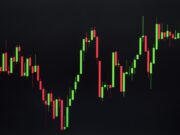Last week, geopolitical concerns weighed heavily on investor sentiment, dragging the major indices lower as the Ukraine crisis intensified. The Nasdaq shed 2.8% for the week, while the Dow and the S&P lost 1.2%. Energy was the top-performing S&P sector, as international oil prices edged $120 per barrel on Thursday before retreating on Friday. Safe-haven assets (i.e., Treasuries and gold) outperformed. For the week, the Cboe Volatility Index—also known as the VIX, or “fear gauge”—rose nearly 16% to around 32. A bright spot last week was the release of the latest employment report. In February, 678,000 jobs were added, the best month since last July. The unemployment rate fell to a post-pandemic low of 3.8%.
In the week ahead, we’ll get more clarity on employment in the U.S. with the Labor Department’s JOLTS report. We’ll also find out whether consumer inflation continued to rise in February with the U.S. Bureau of Labor Statistics release of last month’s Consumer Price Index (CPI) on Thursday. It seems likely that volatility will remain elevated as the market continues to process Russia’s intensifying attacks on Ukraine ahead of a pivotal mid-March Fed meeting.
Our team has a few recommendations of stocks to keep an eye on this week, including an under-the-radar approach to precious metals and a stock that has a history of performing well during rate hikes.
With the Fed about to embark on a cycle of rate-hiking for the ages, we decided to look at some of the top performers from previous Fed hikes for clues on which stocks might do well. One name stood out.
Headquartered in Arlington, VA, the AES Corporation (AES) is one of the world’s leading power companies, generating and distributing power in 15 countries. The company’s diverse portfolio of thermal and renewable generation facilities and distribution businesses spans across the Americas, Europe, the Middle East, and Asia. The stock has a history of outperforming the market following rate hikes.
The Fed’s most recent rate hike cycle began in 2015, during a time when inflation had fallen below the central bank’s 2% target, interest rates were increased 0.25% to 0.5%. In the six months following the hike, the S&P 500 saw a series of ups and downs but finished the period with a modest 0.3% gain. AES, however, managed to stack on almost 19% during the six months following the most recent rate hike.
Before that, Federal Reserve Chairman Ben Bernanke and his colleagues initiated an unprecedented two-year campaign in June 2004 to keep a lid on inflation following the recession of the early 2000s with a 0.25% hike to 1.25%. Six months after the initial rate hike, the S&P 500 had gained 6.2% while AES stacked on an impressive 37%.
Will history repeat this time around? There’s no telling, but the pros on Wall Street seem to see that potential. The stock garners an 83% Buy rating among the analysts offering recommendations. A median 12-month consensus price target of $30.50 represents a 26% upside from the last price.
Most recently, Goldman Sachs analyst Insoo Kin initiated coverage of the stock with a Buy rating and a $30 price target citing the company’s potential to take advantage of the material clean energy investment pipeline. The analyst predicts an approximately 8% EPS CAGR through 2025 that she sees as underappreciated at current valuations.
If you need another reason to consider AES, a quick review of its dividend history should inspire. The company has steadily increased its dividend over the past ten years while maintaining a sustainable payout ratio of around 70% throughout. AES raised their dividend 5% last month to $0.158 per share or 2.55%.
Over the past seven years, precious metals royalty and streaming companies have greatly outperformed in bull and bear markets. An index of five major precious metals royalty and streaming companies greatly outperformed gold and the GDX over the past seven with a return of 135% versus gold’s return of 49% and the GDX’s return of 60%.
So what is a royalty company? A royalty company provides funding to the mining company for the tremendously expensive task of building a mine. Once the mine is producing, the royalty company receives a percentage of that production at a predetermined price or a share of the profit after the gold is sold.
Since the prices for mining output are already set, royalty companies can still make money even when the price of gold is falling. Plus, they don’t participate in the operations of the mines themselves, so royalty companies don’t have to deal with the burden of operating costs and therefore take on much lower levels of debt than producers.
Royalty companies also have the ability to pick and choose their projects and typically hold a diversified portfolio which minimizes concentration risk. If things take a turn for the worse with one project, the company usually has several more to fall back on. The unique business model supports miners and produces cash flow, offering stability and returns for investors even during downturns of gold prices. This is possible thanks to high-profit margins and exposure to a diversified investment portfolio with built-in upside.
Canada-based Elemental Royalties (CVE: ELE) has operations in the U.S., Australia, Africa, and South America. The emerging royalty company has acquired nine royalties since 2017, including four gold royalties acquired in 2020 to the tune of $67.5M.
An investment in Elemental Royalties is an opportunity to invest in high-quality royalties with exciting growth prospects. All of ELE’s royalties are uncapped, and no buyback options exist, which means that there are fewer limitations to the company’s performance.
It’s one of the most attractively priced precious metals royalty companies available with a profit to revenue ratio of just 11, compared to peers like Metalla Royalty (NYSE: MTA), which currently trades at 129 times 2021 estimated profit to revenue. ELE traded at just $1.66 per share as of Friday’s close.
Striking up a position in a name that’s recently suffered a significant drop can be intimidating, but a high-risk factor also comes along with great reward potential. The sell-off in the semiconductor space seems to have delivered a buying opportunity for those with some risk tolerance.
Specialist semiconductor design corporation Monolithic Power Systems (MPWR) serves a variety of sectors, including automotive, industrial, communications, and consumer goods. A variety of businesses are being impacted by global supply chain disruptions and chip scarcity. The realities of supply and demand, on the other hand, imply that the lesser number of chips will be more expensive, and firms like MPWR will be able to operate at total capacity while still doing so profitably.
MPWR crushed analysts’ expectations on EPS and Revenue for the past four quarters (making for a successful 2021). Also, MPWR currently pays a dividend yield of 0.7%. Their year-over-year numbers are all in the green, and the forecasts indicate growth on both a quarterly and annual basis. The company blew past analyst estimates for Q4, reporting $336.5 million in revenue and EPS of $2.12, where the consensus was expecting $321.9 million and $1.87 EPS.
Monolithic Power sees Q1 revenue in the ballpark of $354 million to $366 million, well above the consensus estimate of $322 million, suggesting the analyst community may be underestimating the stock. We’ll have to wait until next season to find out exactly how well the company is maintaining amid current challenges.
MPWR has a consensus 12-month price target of 568.00, with a high of 630.00 and a low of 510.00 among analysts that provide annual price forecasts. The forecast implies an increase of 18.53% over current pricing, and the consensus gives MPWR a solid buy rating.
Should you invest in Monolithic Power right now?
Before you consider buying Monolithic Power, you'll want to see this.
Investing legend, Keith Kohl just revealed his #1 stock for 2022...
And it's not Monolithic Power.
Jeff Bezos, Peter Thiel, and the Rockefellers are betting a colossal nine figures on this tiny company that trades publicly for $5.
Keith say’s he thinks investors will be able to turn a small $50 stake into $150,000.
Find that to be extraordinary?
Click here to watch his presentation, and decide for yourself...
But you have to act now, because a catalyst coming in a few weeks is set to take this company mainstream... And by then, it could be too late.
Click here to find out the name and ticker of Keith's #1 pick...








